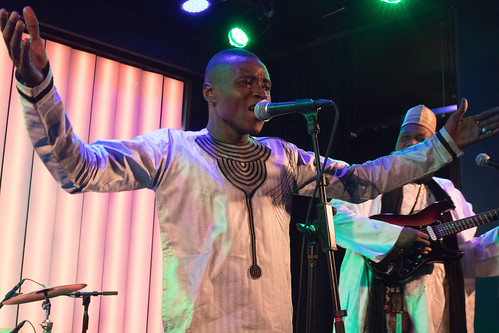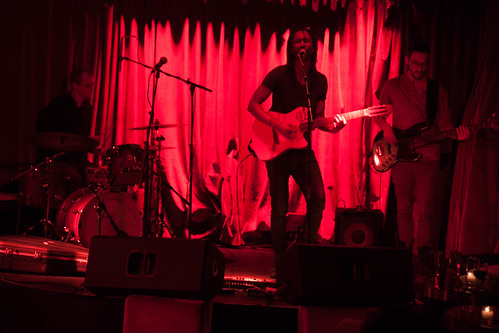Now known as the Federal Republic of Somalia, Westerners view the country as being a lawless, dysfunctional and broken country, split and reeling for a brutal and bloody civil war, and while that has been true over the past 25-30 years, what most people have forgotten is that for roughly a millennia, the Eastern African nation was one of antiquity’s major trading posts with several power Somali empires dominating regional trade, including the Ajuran Empire, the Adal Sultanate, the Warsangali Sultanate, and the Geledi Sultanate. And as a major trading post, the cultures of the Arabian Peninsula, Persia, India, Southeast Asian and China, all of whom conducted trade with the Eastern African nation, managed to influence and slowly worked their way into Somalia’s rich and unique musical culture.
The British and Italian empires through a series of treaties with Somalia’s historical empires and sultanates during the late 19th century gained greater control of parts of the coast, establishing the colonies of British Somaliland and Italian Somaliland while Mohammed Abdullah Hassan’s Dervish State fought and defeated the British four times before a crushing defat by the British in 1920. Italy acquired full control of the northeastern, central and southern parts of the country after defeating the Majerteen Sultanate and the Sultanate of Hobyo — and their occupation of the country lasted until 1941 when the British took over with a military administration. British Somaliland would remain a protectorate of the British while Italian Somaliland became a United Nations Trusteeship under Italian administration, the Trust Territory of Somaliland.
In the 1960s, independence movements across the continent helped redefine the map with Italian Somaliland and British Somaliland uniting in 1960 to form the Somali Republic under a civilian government. Sadly, democratic government didn’t last long; by 1969, the Supreme Revolutionary Council led by authoritarian Mohamed Siad Barre seized power and established the Somali Democratic Republic. Now, here’s where things musically for us begin — in 1988 on the eve of bloody, two decade civil war Siad Barre launched a series of punishing air strikes in Somalia’s northern section, now known as Somaliland in an attempt to squash a rumbling independence movements in the region. Unsurprisingly, one of the targets Siad Barre targeted was the regional radio station Radio Hargeisa, as a way to prevent the organization of further resistance. Knowing that an attack on their radio station and their hometown was imminent, a handful of radio operators, tastemakers and historians recognized that they needed to preserve more than 50 years of modern Somali music — and it meant finding a way to remove thousands upon thousands of cassette tapes, records and master reels and then dispersing them to neighboring countries like Djibouti and Ethiopia, sometimes burying the tapes deep under the ground to protect them from airstrikes, fire, and so on.
The Somali Civil War broke out in 1991 and Mohamed Siad Barre’s government collapsed and as a result a number of armed factions began fighting for influence and control, particularly towards the south. And because of the absence of a central government, Somalia began to be known as a failed state, wth residents returning to customary and religious law in most regions. There were a few autonomous regions towards the north, including Somaliland and Puntland. The early part of the millennium saw the creation of several fledging and sputtering federal administrations including the Transitional Federal Government in 2004, which reestablished national institutions as as the military and in 2006 with the assistance of Ethiopian troops, assumed control of the Eastern African nation’s southern conflict zones from the Islamic Courts Union, which eventually splintered into several radical groups such as Al-Shabaab. Al Shabaab in particular continued to battle the Transitional Federal Government and the African Union Mission in Somalia (AMISOM) for control of the region.
By 2012, insurgent groups had lost most of the territory they had seized and a political process providing benchmarks for the establishment of a permanent democracy was launched, and it included a provisional constitution, which reformed Somalia as a federation. The end result was the Federal Government of Somalia, the first permanent central government in over 20 years was formed and a period of reconstruction began in Mogadishu.
Remember those buried audio recordings I mentioned earlier? Well they were excavated and recalled from their foreign shelters very recently, Some of those recordings are now kept in the 10,000 cassette tape achieve of the Red Sea Foundation, the largest known collection of Somali music and cassettes in the world in Somaliland’s capital Hargeisa. Ostinato Records, best known for the preservation, digitalization, and distribution of obscure world music was able to digitized a significantly large portion of the Red Sea Foundation’s archives, choosing 15 songs as part of their latest compilation of African music Sweet as Broken Dates: Lost Somali Tapes from the Horn of Africa. And while revealing the diversity of styles and sounds of Somali musicianship, the compilation also provides a glimpse of life in Mogadishu in the 1970s and 1980s, when the coastal capital was referred to as the “Pearl of the Indian Ocean.” At the time bands like Iftiin, Sharero and Dur Dur played at some of East Africa’s glitziest nightclubs, while Waaberi Band played packed to the rafter sets at the national theater. Nightlife, music, culture and art were enormous — and interestingly while there were renowned male vocalists like Mahmud “Jerry” Hussen, Somali music of the 70s and 80s were best known for beloved female vocalists Faadumo Qaasim, Hibo Nuura, Sahra Dawo and a collection of truly empowered, prolific women; in fact, half of the compilation features songs sung by and written by women.
Strangely enough, this cultural and musical golden age occurred under a socialist, military dictatorship, which effectively nationalized the country’s music industry. The state owned a thriving scene and essentially music was recorded for and by national radio stations, and it was on distributed and disseminated through public broadcasts or live performances. Privately owned labels were non-existent and the work of a generation of artists was never made available for mass release — and until recently, hadn’t been heard outside of Somalia and its immediate neighbors. Adding to a rather strange period of history, during the height of the Cold War, Somalia had been supported by the Soviets and then US in the Ethio-Somali War — and with a decade of US backing, American soul and funk captured the imagination of Somali youth and musicians.
The Ostinato Records team then spent the better part of year traveling to Mogadishu, Hargeisa, Djibouti and across the Somali Diaspora in parts of Europe, the US and the Middle East to track down the musicians, songwriters, composers, government officials, scenesters, radio personalities and other folks, who had played a role during the 1970s and 1980s and got their stories down in a 15,000 word liner note booklet.
As the folks at Obstinato Records explain in press notes ” Alongside the story of Somalia’s music before the civil war, the selection is also focused on the pan-Somali sound. Spread over much of the Horn of Africa, Somali language and culture transcend arbitrary borders. Somali singers from Djibouti were at home in Mogadishu.” They continue by saying that “this compilation seeks to revive the rightful image, history, and identity of the Somali people, detached from war, violence, piracy, and the specter of a persistent threat.”
The compilation’s first single Danan Hargeysa’s “Uur Hooyo (Mother’s Womb)” feat. Mohamed “Huro” Abdihashi was recorded and released in 1987, and the breezy and summery track manages to nod at the trippy psychedelia of 70s dub and soul as a shuffling rhythm is paired with explosive and expressive horn blasts, synths that possess a cosmic sheen, and a strutting bass line. And if there’s one thing the song does evoke is a far simpler time of laughter, constantly flowing wine and beer, of dancing until the sun came up and walking home in a drunken and elated shuffle with arms draped over the shoulders of your comparisons softly singing the songs you heard in the nightclub throughout the night. The language, the scales and the melodies may be somewhat alien to many Westerners, but it’s the wistful tone — albeit in retrospect perhaps? — that should feel familiar. It’s the sound of youth before inevitably being altered permanently by life’s complexities, ambiguities and horrors.
Like this:
Like Loading...


